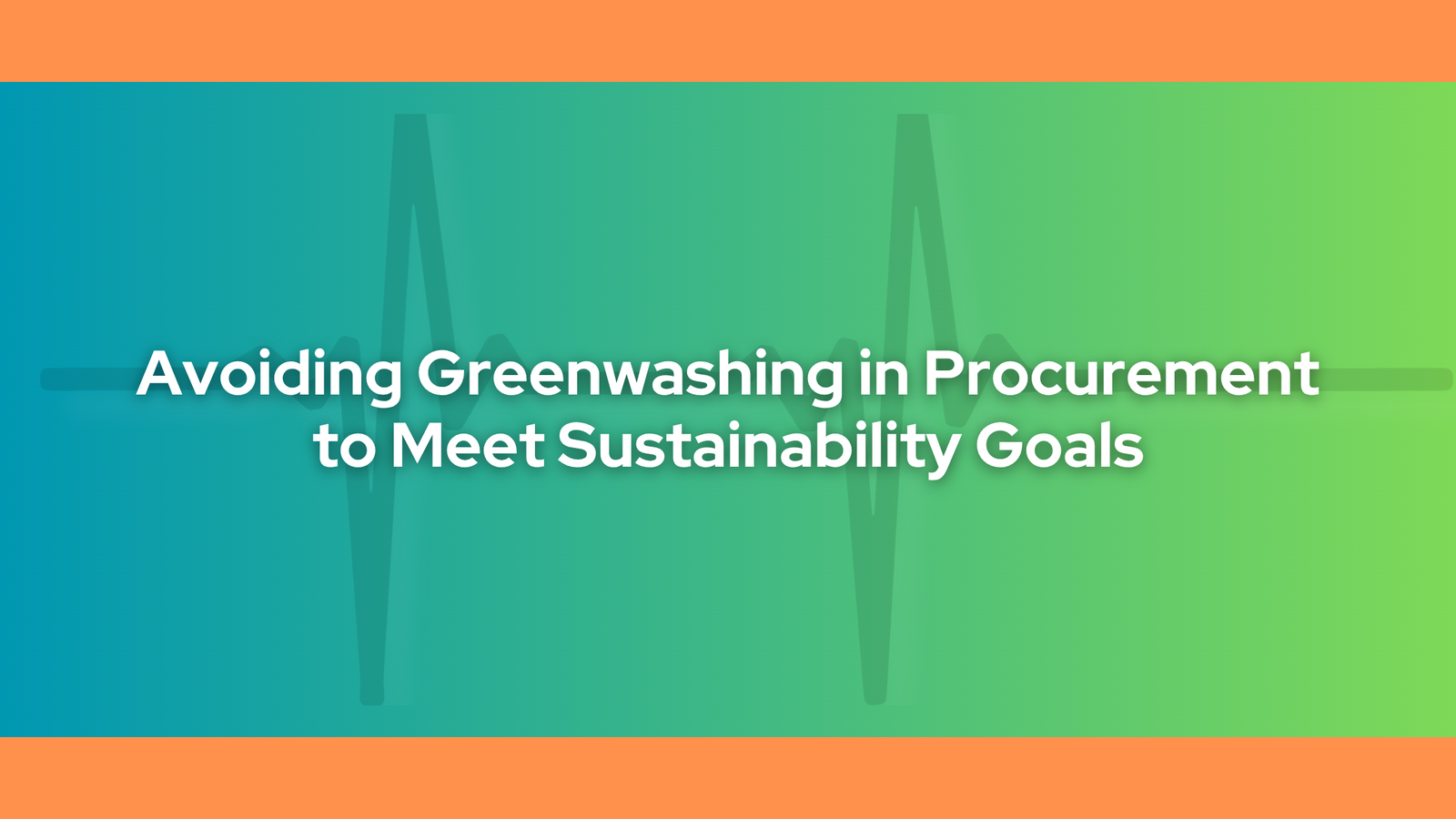
No matter who you are or where you live, there is no doubt that you have experienced at least one impact of climate change. Everyone, including businesses and organizations, is pressured to meet sustainability goals. Even procurement professionals play an important role in making sure their companies maintain their credibility, compliance, and alignment with their environmental commitments. However, greenwashing—the practice of presenting false environmental claims—is putting this purpose at greater risk. Avoiding greenwashing in procurement is no longer an option for investors and decision-makers; doing so is necessary to achieve real impact.
Greenwashing happens when companies and organizations exaggerate, lie, or misrepresent the environmental benefits of their operations, supply chain, products, and/or services. According to the Forest Stewardship Council (FSC), these false claims can take any form, from using ambiguous terms like “eco-friendly” without backing proof to misleading images and self-proclaimed green labels.

While some might think sustainability is just a corporate buzzword to keep companies relatable and modern, it shouldn’t just be a marketing tactic but an environmental responsibility. Greenwashing may seem harmless, but it can actively weaken the trust of investors, consumers, and even the public while frustrating the shift toward sustainable practices by prioritizing a company’s image over real action.
The United Nations also reiterates this idea, stating that greenwashing distracts by undermining credible attempts to cut emissions and address the consequences of climate change. Greenwashing also impairs the environmental commitment and accountability across different industries.
These deceptive practices in procurement can lead to unmet sustainability goals, non-compliance with ESG regulations, and poor supplier selection. Greenwashing poses a risk to the reputation of those who practice it, but it can also have negative effects on the environment and regulations in the real world.
But how can one identify the red flags of greenwashing? There are common warning signs that procurement professionals and teams alike can look out for.

Avoiding greenwashing in procurement requires due diligence. Use digital tools like blockchain and artificial intelligence (AI) to verify supplier data and identify discrepancies. Another is incorporating sustainability and ESG criteria into RFPs and supplier evaluations. One can also request reliable third-party certifications like FSC or ISO to validate environmental claims and conduct routine audits to track sustainability performance.
Particularly, public procurement is coming under more scrutiny. Public tenders frequently rely on supplier self-declarations, which can be a breeding ground for greenwashing if they are not backed by due diligence and accompanying paperwork, according to the Belgian Institute for Company Lawyers (IBJ). To combat this, new laws such as the European Directive 2024/825 mandate that all green claims be transparent and supported by reliable data.
With laws requiring unambiguous environmental claims and consumer education campaigns to encourage true sustainability, the Asia-Pacific region is taking strong action against greenwashing. For instance, Japan’s Ministry of the Environment has created criteria for green product labeling to stop misleading marketing tactics.
Beyond just protecting the company’s bottom line, avoiding greenwashing in procurement upholds the brand’s integrity and reputation, advances global climate goals, and lays the groundwork for ethical, responsible sourcing in the long term.